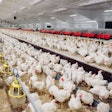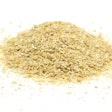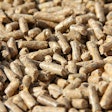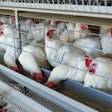
Studies show why overcooking should be avoided
Thermal overprocessing of grains, such as soybeans and corn, may reduce nutritive value of cooked products. This is the result of protein destruction (formation of Maillard products), starch retrogradation (starch resistant to digestion) and vitamin destruction. Overcooking can occur with any system of thermal processing, including extrusion, steam flaking and air drying.
Some examples will help illustrate this often-overlooked issue. In an older study, overheated full-fat soybeans had urease activity three times higher than that of typical soybean meal. This resulted in severely depressed growth performance in weaned pigs compared with plain soybean meal during the first week post-weaning. Normal soybean meal is often considered unsuitable for weaned pigs, but improperly processed soybeans are even worse.
In another study, mildly extruded wheat (68% starch gelatinization) supported better growth performance than excessively extruded wheat (77% starch gelatinization) in 21-day-old pigs during the first three weeks post-weaning, although both were superior to untreated wheat. In general, cooked wheat is considered a must when wheat is used in piglet formulas, but overcooking should clearly be avoided.
In a final study, growth performance of weaned pigs actually decreased and then increased as starch gelatinization in extruded corn increased from 39% to 89%, perhaps because of excessive starch retrogradation in the intermediate levels of gelatinization (from added water during extrusion). Previous studies also indicated that overprocessed corn (retrograded) may actually increase the incidence of diarrhea in young pigs.
It should be noted that proper thermal processing of cereals improves starch digestibility, and marginally improves protein utilization. Thus, cereals with more naturally resistant starch and higher protein concentration, such as barley and wheat, benefit the most from cooking. In contrast, the main benefit from cooking protein-rich ingredients, such as soybeans and rapeseed, is the significant destruction of antinutritional factors, whereas any improvements on protein and carbohydrate utilization are secondary, yet not insignificant.
















